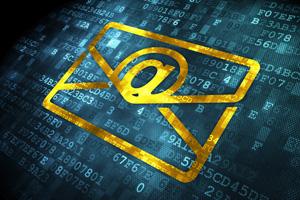The Do’s and Don’ts of Approaching Sales Leads via Email



When Heather Morgan arrived in Silicon Valley a few years ago, she knew hardly anyone. Then she got a business development role at a gaming startup, she knew she had to meet potential investors and partners fast, and she’s since turned the email techniques she developed into a business of her own.
When Heather Morgan arrived in Silicon Valley a few years ago, she knew hardly anyone. When she got a business development role at a gaming startup, she knew she had to meet potential investors and partners fast, and she’s since turned the email techniques she developed into a business of her own.
Morgan, the CEO of Salesfolk, was the featured guest in a recent Webinar hosted by InsideSales, a predictive analytics service supported by Salesforce Ventures. She says that while lots of salespeople rely on email to drive leads, they often overlook simple do’s and don’ts that can turn what’s really a mass mailing into what looks and feels much more personalized. Her results speak for themselves: a 67 per cent response rate on some messages. Keep these in mind before you press “send.”
Do: Act like you would if you were calling or meeting in person
Although many firms will create a CSV file with hundreds of names, Morgan suggests getting a better sense of your target’s common pain points by diving deeper on a small sample. She recommends extracting at least three names from the list and exploring their LinkedIn profiles, for instance.
“Take note of the bullets, their skills, how they recommend people, how they’re recommended and how they describe their job,” she says. “Go on Twitter, forums, look at what kind of content they’re consuming, writing and sharing.”
Don’t: Standardize a subject line
If you’re cold emailing with “Introduction from [Company Name],” don’t be surprised if you get silence in return. “Many of the subject lines people use are based on templates that haven’t changed in 10 years,” Morgan says. “People want a magic bullet, but in reality is once you have that, people become immune to that trick and very weary of it.”
Do: Promise specific value before they hit ‘open.’
Like any other facet of sales, cold emailing is about forming a relationship, Morgan says. That’s why subject lines should be less about the company sending the message and more about what you can offer the recipient, whether it’s advice, a tip or helpful feedback. Think about something like ‘Idea for meeting [Company Name’s] sales objectives,” which Morgan’s firm has used for a client. “It got a 53 per cent open rate,” she says.
Don’t: Use your company boilerplate as your key message
Companies often try to summarize what they do in marketing material, and then make the mistake of using it as the basis of cold email messages, Morgan says. Yet that first sentence is key to whether or not a prospect will show an interest. Avoid starters like, “I wanted to introduce our company, which is the market leader in XYZ,” or “We’re a growing company that’s revolutionizing the way . . .” All the reader wants to know is what’s in it for them, Morgan says.
Do: Build ‘social proof’ as early as possible
Although trying to build credibility by suggesting your company has a track record of successful projects and tailor-made products and services, Morgan says the best approach is to use real numbers and, where possible, real names of other customers. She offered an opening line she used for an actual cold email. “We have a theory about leveraging the power of games to increase sales productivity. This same concept has helped [Name Customer] increase their revenue by 100 per cent in eight weeks, and achieve a 65 per cent increase in outbound emails over three months.” This is the “social proof” Morgan says will keep prospects engaged.
Don’t: End without a clear call to action
“You can get everything else right, but if you screw up your CTA your whole email was a waste,” Morgan says. “The biggest mistake is people forget they need to have an incentive for the prospect to respond in their CTA.” How many times have you seen this one: “If there is a question you want to ask, feel free to message me at any time.” Compare it with the following: “When do you have time for a short call so I can learn a bit more about (company’s) sales processes and share my sales productivity idea with you?” Whether or not the prospect ends up doing business with you, they know they’re at least likely to learn something if they connect.
Do: Email them more than once
No one wants to risk seeming like they’re hounding a prospect, but Morgan says the most successful cold email campaigns can involve eight different messages. “The majority of your results will probably come through numbers five through eight,” she says. The trick is to make sure each message focuses on only one idea or benefit to the prospect. Value propositions could include fear of loss, competitive issues, or a desire they have. In other words, even the best cold emails may take a while before the sales lead is ready to warm up.
To find out more on how you can find new customers faster than ever and grow and optimize your sales pipeline with the right tools, check out our free eBook:







